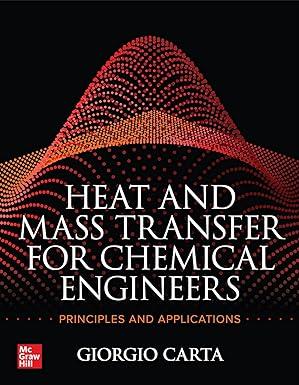Various chemicals are often added to polymers, such as Polyethylene terephthalate (PET), to improve their properties, including
Question:
Various chemicals are often added to polymers, such as Polyethylene terephthalate (PET), to improve their properties, including flexibility and UV resistance. However, leakage of these additives into foods placed in containers made from plastics containing such additives can be a concern because of potential toxicity. Li et al. have measured the leakage of various additives from PET into various food simulants including 50% ethanol. For the UV stabilizer 2-(2-Hydroxy-5-methylphenyl) benzotriazole (UV-P) at 70°C they report a diffusivity in PET of 1.1 × 10−10 cm2/s and an equilibrium distribution coefficient ![]() = 1,158. The latter describes the equilibrium ratio of the UV-P concentration in PET and that in 50%
= 1,158. The latter describes the equilibrium ratio of the UV-P concentration in PET and that in 50%
ethanol. Consider a cylindrical PET container with a 10 cm diameter and a wall thickness of 0.2 mm filled to a 26 cm height with 50% ethanol. The initial UV-P content of the PET is 0.05 g/cm3.
(a) What is the maximum concentration of UV-P that we can expect in the liquid after a long time? (b)
Develop a model to describe the leakage of UV-P into the liquid assuming that the PET can be described as a flat wall and that diffusion in the PET is controlling. Plot the expected concentration of UV-P in the liquid as a function of time assuming that leaching is controlled by diffusion in PET.
What will be the UV-P concentration in the liquid and the percentage of the UV-P will have leaked after 20,000 s?
(c) What will be the average concentration of UV-P in the liquid after 20,000 s if we assume that leaching is completely controlled by diffusion in the liquid and that the liquid is perfectly still?
Step by Step Answer:

Heat And Mass Transfer For Chemical Engineers Principles And Applications
ISBN: 9781264266678
1st Edition
Authors: Giorgio Carta




